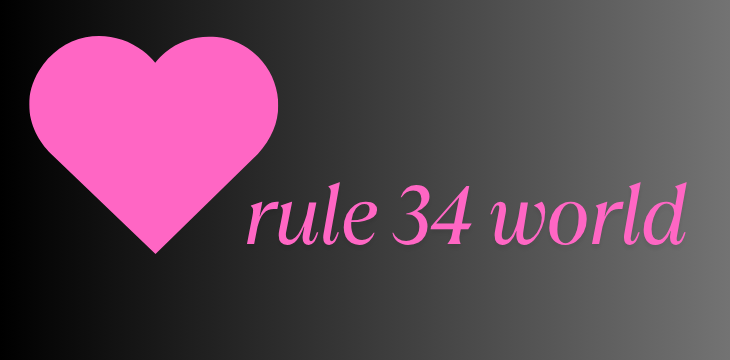Introduction to Rule 34 and its Origins
In the vast expanse of the internet, where creativity knows no bounds and imagination runs wild, one phenomenon stands out: Rule 34 world. This quirky yet provocative concept suggests that if something exists, there is likely adult content related to it somewhere online. From beloved cartoon characters to everyday objects, nothing seems immune to this rule’s playful grasp. But how did we arrive at this intriguing intersection of art and obsession? As we delve deeper into the Rule 34 world, prepare for a journey through its origins and evolution—an exploration of boundaries blurred by pixels and desires. Buckle up; it’s going to be an eye-opening ride!
The Evolution of Rule 34 world’s in Internet Culture
Rule 34 has transformed drastically since its inception. Initially, it served as a humorous reflection of the internet’s vastness and creativity. As online communities flourished, so did Rule 34’s reach.
In its early days, it was primarily confined to niche forums and meme sites. People shared outrageous interpretations of popular media characters. The anonymity of the internet allowed for uninhibited expression.
As social media exploded onto the scene, Rule 34 expanded into mainstream consciousness. Platforms like Reddit and Tumblr became breeding grounds for fan art that often crossed conventional boundaries.
This evolution highlighted a blend of fandom and adult content that challenged societal norms. What once sparked laughter now ignites debates about morality in digital spaces.
The sheer volume of content generated has made Rule 34 an integral part of internet culture today, influencing how creators approach their work across various mediums.
Controversies and Criticism Surrounding Rule 34’s
Rule 34 ignites a firestorm of debate. Critics argue it crosses moral and ethical lines, especially when minors are involved or sensitive subjects are parodied. The explicit nature of the content often raises alarms in parental circles.
Moreover, some artists feel their work is being exploited without consent. They question whether Rule 34 is an expression of creativity or just theft masked as parody. This tension creates friction within creative communities.
Legal implications also loom large. Copyright infringement issues complicate the landscape further, leaving creators uncertain about their rights.
The anonymity afforded by online platforms fuels both creation and backlash. Many participants hide behind pseudonyms, leading to a lack of accountability that exacerbates tensions surrounding this phenomenon.
With emotions running high on all sides, Rule 34 continues to provoke strong reactions across diverse audiences.
Impact on Society and Popular Media
The impact of Rule 34 world on society and popular media is profound. It has reshaped how we consume content, often blurring the lines between reality and fantasy. Fans explore creative interpretations of their favorite characters, pushing boundaries in ways that mainstream media may shy away from.
This phenomenon challenges traditional storytelling norms. Creators are now more aware of niche audiences craving alternative narratives. The rise of fan art and parodies reflects a culture increasingly driven by user-generated content.
Mainstream platforms occasionally embrace this trend, leading to unexpected collaborations. Animated series and films sometimes reference or even parody Rule 34 concepts, tapping into its cultural relevance without promoting explicitness.
Yet there’s a dual-edge to this influence; while it liberates creativity for some, it raises questions about consent and appropriation in artistic expression. Society grapples with these complexities as digital landscapes continue to evolve.
Rule 34 world Beyond the Internet: Real-Life Examples
Rule 34 has seeped into the real world in fascinating ways. A prime example is the emergence of fan art conventions. Artists often showcase their interpretations of well-known characters, pushing boundaries that would have seemed unthinkable a decade ago.
Cosplay events also reflect this phenomenon. Participants embody their favorite characters while adding unique twists that flirt with Rule 34 concepts. The blending of fantasy and reality often blurs lines, creating an engaging dialogue about creativity and expression.
Moreover, merchandise inspired by adult-themed parodies finds its way onto mainstream shelves. From plush toys to apparel, these items highlight society’s evolving relationship with sexuality in pop culture.
The impact reaches even further through viral videos and memes spreading across social platforms. Each iteration reinforces how Rule 34 transcends online spaces, making it part of our everyday conversations and experiences—often humorously or provocatively so.
Future of Rule 34 world and Its Influence on Online Behavior
The future of Rule 34 suggests an ever-expanding horizon for internet creativity. As digital spaces grow, so do the avenues for expression, often leading to unexpected interpretations.
With emerging technologies like artificial intelligence and virtual reality, we might see a shift in how content is created and consumed. The line between fantasy and reality could blur even further, making Rule 34 a more integral part of our online experiences.
Social media platforms will likely adapt their policies as they navigate the complexities surrounding user-generated content. This evolution may create new challenges but also foster innovative ways to engage with art and fandom.
As communities continue to form around niche interests, the influence of Rule 34 on collective behavior becomes evident. It shapes not only individual preferences but also broader conversations about identity and representation in popular culture.
Conclusion: Embracing or Rejecting the Chaos of Rule 34?
The chaotic world of Rule 34 presents a unique lens through which we can examine the complexities of human creativity and desire. This phenomenon challenges traditional boundaries, pushing the envelope on what is considered acceptable in both art and discourse. While some embrace it as a form of expression, others view it with skepticism.
As we navigate this digital landscape, individuals face choices about their engagement with such content. The provocative nature of Rule 34 stirs debate among communities, fostering conversations that often blur lines between humor and offense.
Whether one chooses to lean into or distance themselves from the chaos generated by Rule 34 remains deeply personal. Each perspective adds to the rich tapestry of internet culture—an ever-evolving dialogue reflecting our collective experiences and values within an increasingly connected world.

